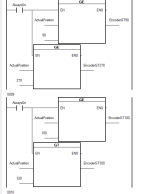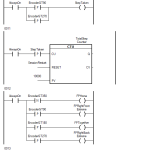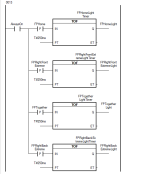GaryS
Member
I see all these replies and have to wonder
On incremental encoders the Z output only turns on once per revolution and is only on for 1 pulse width
I would recommend using a high speed counter module to make sure you don't miss any pulses
You can use the Z output to read and set repeatable shaft position if you have the right drive
On incremental encoders the Z output only turns on once per revolution and is only on for 1 pulse width
I would recommend using a high speed counter module to make sure you don't miss any pulses
You can use the Z output to read and set repeatable shaft position if you have the right drive







